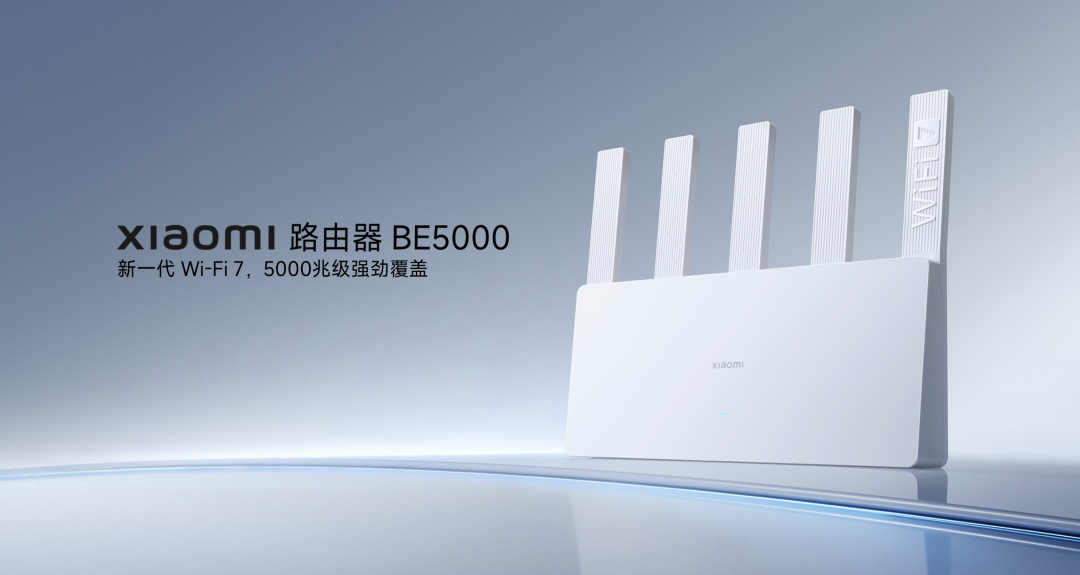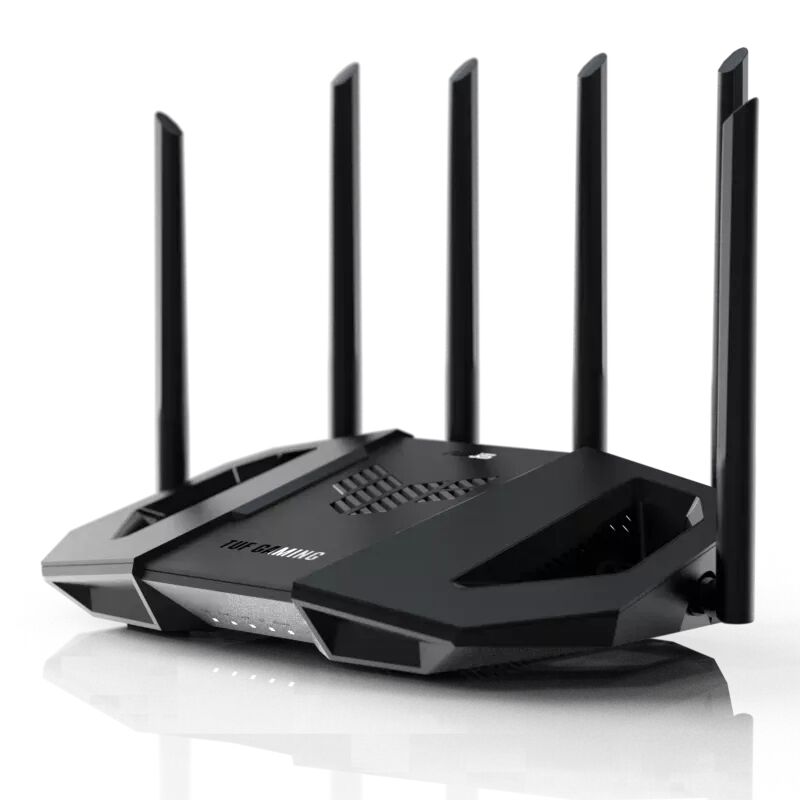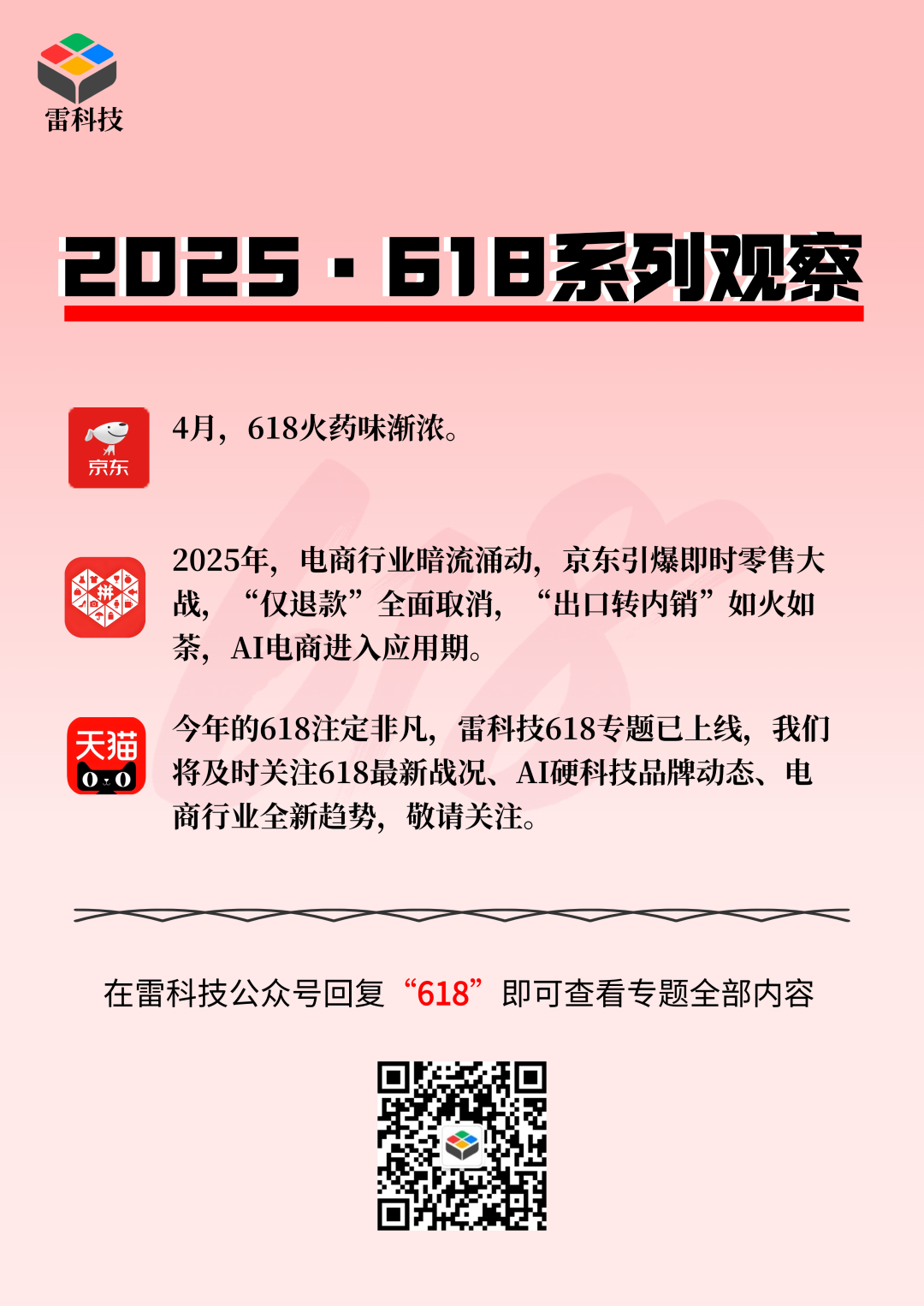
Source: Lei Technology AI Hardware Group | Editor:Tianxing

On May 17, 2025, China Telecom officially launched the 5G-A package, marking the commercial rollout of 5G-A networks by the three major operators. Many 5G users were pleasantly surprised to find a “5G-A” icon added to their phone status bars.But have you noticed that there is also a “⑥” or “⑦” icon next to the Wi-Fi signal icon on your phone/tablet status bar?
This icon next to the Wi-Fi signal indicates the “Wi-Fi 6” and “Wi-Fi 7” standards.
After December 2023, the long-awaited Wi-Fi 7 technology finally landed in China. Major brands quickly launched new Wi-Fi 7 routers, and smartphone manufacturers began rolling out OTA updates to support Wi-Fi 7 networks.
Logically, this technology, which officially became commercial in late 2023, should have been widely adopted by now after a year of development in 2024. However, based on incomplete statistics around me, the adoption of Wi-Fi 7 routers seems to have encountered some issues.

What are the differences between Wi-Fi 7 and Wi-Fi 6?
Considering that many may not be familiar with Wi-Fi 7, especially since brands have not emphasized Wi-Fi performance in their products since the second half of 2024, I will first introduce the technical features of Wi-Fi 7 and its differences from Wi-Fi 6.
Similar to mobile network standards, Wi-Fi technology also has concepts of “standards”, “generations”, and “commercial names”. The well-known Wi-Fi 6 (commercial name) corresponds to the IEEE 802.11ax technical standard. Today’s focus, Wi-Fi 7, corresponds to the IEEE 802.11be standard.

Image Source: Intel
As the latest Wi-Fi standard, Wi-Fi 7 can achieve a maximum speed of 46Gbps, significantly faster than the 8.6Gbps of the Wi-Fi 6E era, even surpassing Thunderbolt 3’s 40Gbps.Even small wireless devices can easily reach gigabit speeds on a Wi-Fi 7 network.
Additionally, Wi-Fi 7 supports a 320MHz channel width, which is a 100% increase compared to Wi-Fi 6’s 160MHz. This means more data can be transmitted simultaneously, greatly reducing network congestion and latency.
Wi-Fi 7 also introduces Multi-Link Operation (MLO) technology,allowing Wi-Fi 7 devices to operate simultaneously across multiple frequency bands:Even if one frequency band is interfered with or congested, devices on that band can seamlessly switch to another band, ensuring stable and smooth data connections, enhancing network reliability and flexibility.
Furthermore, Wi-Fi 7 employs advanced modulation technology, 4096-QAM, which converts data packets from 10 bits to 12 bits, allowing more data to be transmitted within the same radio wave,further improving network efficiency and throughput.As for low latency, that is a fundamental feature of Wi-Fi 7; according to Netgear, Wi-Fi 7 can reduce latency by “100 times”.
In simple terms,Wi-Fi 7 not only focuses on speed but also optimizes wireless signal interference resistance.Although this does not fundamentally solve the issue of Wi-Fi signal attenuation through walls, in an era of increasing wireless devices and the Internet of Things, Wi-Fi 7 can indeed address some urgent needs.

Which Wi-Fi 7 routers are worth buying?
Since Wi-Fi 7 offers such significant improvements, how can one take advantage of it? Clearly, because Wi-Fi 7 uses a completely new technical standard, it cannot be simply upgraded via OTA like mobile systems— the reason we could unlock Wi-Fi 7 on phones via OTA at the end of 2023 is that the phones already had the necessary hardware; however, routers and other devices typically do not have “advanced hardware” that can be unlocked through system updates.
In other words,to use Wi-Fi 7, one must replace their router.
However, unlike the router market two years ago, with the maturity of the supply chain, the prices of Wi-Fi 7 routers have become exceptionally affordable over the past year: routers that once cost at least 500 yuan can now be purchased for under 300 yuan.
So, at this point in mid-2025, which Wi-Fi 7 routers does Lei recommend? (No sponsored content, feel free to enjoy).
1. Xiaomi Router BE5000: An Entry-Level Choice for Wi-Fi 7.
When it comes to Xiaomi routers, everyone is likely familiar: with the easy-to-use Xiaomi Wi-Fi App and exceptional cost-performance ratio, Xiaomi routers have long been the “default” brand for many when buying routers. In the Wi-Fi 7 era, Xiaomi continues its trend of offering entry-level routers with great value.

Image Source: Xiaomi
In terms of configuration, the Xiaomi Router BE5000 features a dual CPU + 512MB RAM setup, paired with a 5 antenna scheme: the 2.4GHz band uses a 2×2 MIMO configuration, theoretically supporting a maximum rate of 688Mbps; the 5GHz Wi-Fi uses a 3×3 MIMO configuration, theoretically supporting 4323Mbps.
For wired I/O, the Xiaomi Router BE5000 provides 4 adaptive WAN/LAN ports, with port 4 supporting 2500/1000/100M adaptive modes, while the other three ports are gigabit ports.
Some may think that having only one 2.5Gbps port is not very meaningful, but that is not the case: when used as a WAN port, the 2.5G port can reduce the probability of “network contention” within the router; and the 2.5G LAN port can also be useful in MESH networking.
2. Huawei Router BE3 Pro: Powerful Communication Technology Enhances Weak Network Experience.
In terms of price, the Huawei Router BE3 Pro is similar to the Xiaomi Router BE5000. However, in terms of configuration, Huawei pulls ahead:
The Huawei Router BE3 Pro has 512MB of RAM and 128MB of flash memory, with four ports. Note that the Huawei Router BE3 Pro comes in two versions: a 1000M port version and a 2500M port version. The former has four gigabit ports, while the latter has three gigabit ports and one 2.5Gbps port. In terms of wireless speed, the Huawei Router BE3 Pro has a maximum speed of 688Mbps on 2.4GHz and 2882Mbps on 5GHz.

Image Source: Huawei
Additionally, Huawei has proposed an optimization scheme called Wi-Fi 7+,which is a chip-level network collaboration technology developed by Huawei on top of the Wi-Fi 7 protocol. Based on weak signal dual Wi-Fi acceleration and dynamic narrow bandwidth technology, Wi-Fi 7+ can improve network stability and latency for Huawei devices under weak network conditions.
3. ASUS TUF Mini Cyclone Pro Wi-Fi7 BE6500: All 2.5G Ports, No Compromises.
Although the BE6500 is priced higher than the combined cost of the two entry-level Wi-Fi 7 routers mentioned earlier, it still offers excellent value:
The BE6500 features a 1.5GHz quad-core processor with 1GB RAM, and the wireless network uses a 6 antenna scheme: the 2.4GHz band is a 2×2 MIMO configuration, with a maximum speed of 688 Mbps;the 5GHz band uses a 4×4 MIMO configuration, supporting a maximum of 5764Mbps.

Image Source: ASUS
In terms of wired I/O,the BE6500 offers an impressive 4×2.5Gbps all 2.5G port configuration,allowing it to easily handle 2.5Gbps networks for your broadband, computer, and NAS.
Like other ASUS routers, the ASUS TUF Mini Cyclone Pro Wi-Fi7 BE6500 also offers high system playability. If you are an experienced “router player”, the ASUS TUF Mini Cyclone Pro Wi-Fi7 BE6500 is definitely worth considering.
4. ASUS RT-BE86U: A Flagship Router Representative.
If four 2.5Gbps ports are still not enough for your network needs, you might consider the ASUS RT-BE86U. As ASUS’s next flagship router in the Wi-Fi 7 era, the ASUS RT-BE86U leaves no regrets in hardware configuration.

Image Source: ASUS
A 2.6GHz quad-core processor paired with 1GB RAM provides a solid foundation for high-load router conditions, and the maximum speeds of 1032Mbps (2.4GHz) + 5764Mbps (5GHz) can fully utilize Wi-Fi 7 for phones and tablets.
As for wired networking,the ASUS RT-BE86U not only offers four 2.5Gbps ports but also includes a dedicated 10Gbps port,allowing for read and write speeds comparable to built-in hard drives when paired with file servers or high-end NAS.

Conclusion: 618 coincides with Wi-Fi 7,
It’s the perfect time to upgrade routers.
As the successor to Wi-Fi 6 technology, Wi-Fi 7 offers advantages in both technology and experience. With the rollout of Wi-Fi 7, more devices will support it in the future, including tablets, TVs, and even smart home devices.
However, for average users, the current number of Wi-Fi 7 products is still not very large, mainly focused on smartphones and tablets.If your current Wi-Fi 6 router is working well, there is no need to rush to purchase a Wi-Fi 7 router; you can wait until more products are available.Of course, if you want to experience the most advanced wireless network technology and have compatible devices, or plan to upgrade your router, I recommend you consider the content of this article to choose a suitable Wi-Fi 7 router. After all, a router can last for several years, and with the national subsidies coinciding with 618, it’s the perfect time to upgrade.
#Xiaomi #ASUS #Huawei #WiFi #WiFi7
In April, the competition for 618 heats up.
In 2025, the e-commerce industry is in turmoil, with JD.com igniting an instant retail war, “refund only” being completely canceled, and “export to domestic sales” booming, while AI e-commerce enters the application phase.
This year’s 618 is destined to be extraordinary, and Lei Technology’s 618 special topic has been launched. We will keep a close eye on the latest developments in 618, AI hard technology brand dynamics, and new trends in the e-commerce industry, so stay tuned.

Lei has created several fan groups, welcome to scan the code to join!
Let’s chat and share tips on using devices~




 End
End
